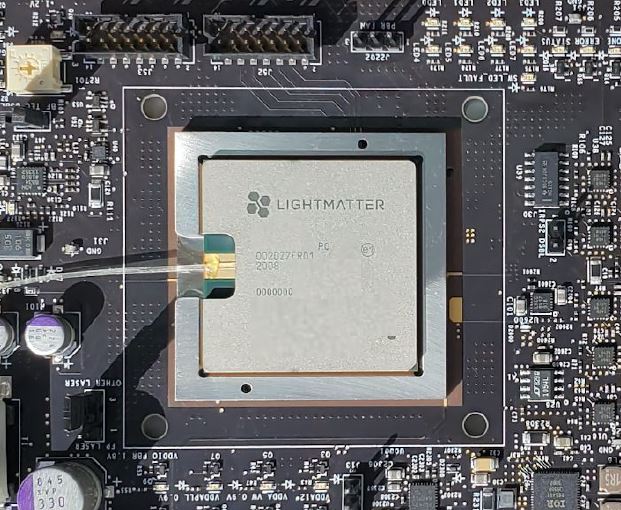The next processor we have out of HotChips 2020 is a big one. This processor uses light instead of electricity for data transmission and manipulation. Using light will mean even faster calculations at a low energy cost. Lightmatter, a company working with advanced silicon photonics processors, has developed this device.
This AI photonic processor, and general-purpose AI interface accelerator will use light for calculations and communications. Using light in place of electricity will reduce a lot of heat output because of low light resistance. The low heat generation will, in turn, mean less energy consumption and improved speed of the processor.
Now we know that training AI Algorithms takes a lot of time and processing power. Since 2010 our processing power has grown at five times the rate predicted by Moore’s Law. That means faster training and the ability to have more sophisticated algorithms in place. This Optical Processor from Lightmatter will most likely prove a milestone in our search for machines that power AI of the next generation.

According to Nicholas Harris, founder, and CEO of Lightmatter, “The Department of Energy estimates that by 2030, computing and communications technology will consume more than 8 percent of the world’s power. Transistors, the workhorse of traditional processors, aren’t improving; they’re simply too hot. Building larger and larger data centers is a dead-end path along the road of computational progress.”
He said that now we need to move forward from conventional transistor-based design and find new methods of computing. The processors from Lightmatter offer a path for future research. These chips not only work faster but are also a lot more energy-efficient. This will enable a big leap in our technology while also decreasing the technology waste impact on the planet.
The Optical Architecture:
Carl Ramey, Vice President of engineering at Lightmatter, presented their new photonic processor architecture at HotChips 32. With over a billion FinFET transistors, thousands of arithmetic units, and many data converters, this machine will tear through AI workloads. Currently, they have added support for machine learning frameworks like PyTorch and TensorFlow, which are used by most industrial and research standard AI algorithms.
Also Read: BrainAcess a new brain interface kit from NeuroTech
The 3D design on the chip shows that this design will incorporate multiple layers of processing. Because this design uses less power and dissipates, fewer heat engineers are able to stack up various layers. Furthermore, the multilayer design also benefits data travel delay. Using the speed of light also means that the processor will have aster communication with cached memory.

Looking at the image above, we can see that currently, Lighmatter is trying to build some kind of compute card. There is definitely a processing chip on there, and we can also see the SODIMM memory stick on there. At the bottom, we can see the PCIe interface connectors along with some output ports from the card. An interesting thing to note here is that there is no power connector on this card, which validates the low power argument of the manufacturer.
This new processor architecture is a big leap for photonic processors. If the performance gains and stability claims hold up, we may have a lot of companies switching for this approach. Light-matter surely has proved what can be established with these highly efficient chips with large performance bump.


